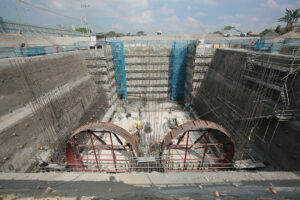THE ASIAN Development Bank (ADB) on Thursday said it would boost investments in human development, infrastructure and disaster resilience in the next six years to help the Philippines achieve inclusive growth.
Under its Country Partnership Strategy 2024-2029, the multilateral lender committed to leverage partnerships, increase co-financing and help tailor-fit solutions based on the country’s needs.
The ADB also cited economic competitiveness and nature-based development and disaster resilience as priorities under its new country strategy.
“These priorities are complemented by crosscutting initiatives that promote digital transformation, gender equality and improved governance and institutional capacity,” it said in a report.
Under its partnership strategy, the ADB would also focus on developing the country’s economic corridors and regional centers, ADB Country Director for the Philippines Pavit Ramachandran said.
Last year, the Philippines got $4.5 billion (P252.8 billion) in sovereign and nonsovereign assistance from the ADB. From this year until 2029, the loans are expected to hit at least $24 billion, it said.
“We expect to sustain a similar level of annual financial support during the new Country Partnership Strategy,” Mr. Ramachandran said in the report.
This covers project preparation and feasibility studies for the government’s big-ticket investments and transaction advisory services for public-private partnership (PPP) projects.
The ADB cited the Philippines’ readiness to become an upper middle-income country, but climate change, poverty and income inequality could dampen its growth prospects.
The government aims to achieve upper middle-income status by 2025. Under the World Bank’s income classification data, the country has remained a lower middle-income economy.
The country also remains vulnerable to external shocks that could affect state revenues, trade and commodity prices.
To combat this, the ADB will focus on disaster financing and investments in flood mitigation. It will also seek to improve food security through agribusiness and logistics development to cushion supply pressures.
ADB’s assistance will also support investments in energy and digital infrastructure, Mr. Ramachandran said.
The multilateral lender will also work with the government to address right-of-way and resettlement issues to avoid delays in infrastructure projects.
The lender will also support the development of climate-smart infrastructure, promote a low-carbon economy and push the sustainable use of the country’s natural resources.
“The country’s high vulnerability to climate change, which affects the poorest of the poor, and persistent poverty and income inequality, need to be urgently addressed to ensure the growth trajectory is sustained and will not be derailed despite disasters and shocks,” Mr. Ramachandran said.
The Philippines has the highest natural disaster risk index in the world at 46.86, according to the 2023 World Risk Index.
To address poverty, the ADB will increase support for quality education and healthcare, social protection, rural development and employment.
The bank will also promote PPPs in transport, clean energy, agriculture and healthcare, and extend the use of PPPs to local governments.
It also said it would push widening credit access for small and medium enterprises and support digital transformation and ease of doing business, Mr. Ramachandran said.
Last year, the ADB was the country’s second-biggest source of official development assistance at $11.43 billion.
The government targets 6-7% economic growth this year and 6.7-7.5% next year. It also expects growth to average 6.5-8% through 2028. — Beatriz Marie D. Cruz
